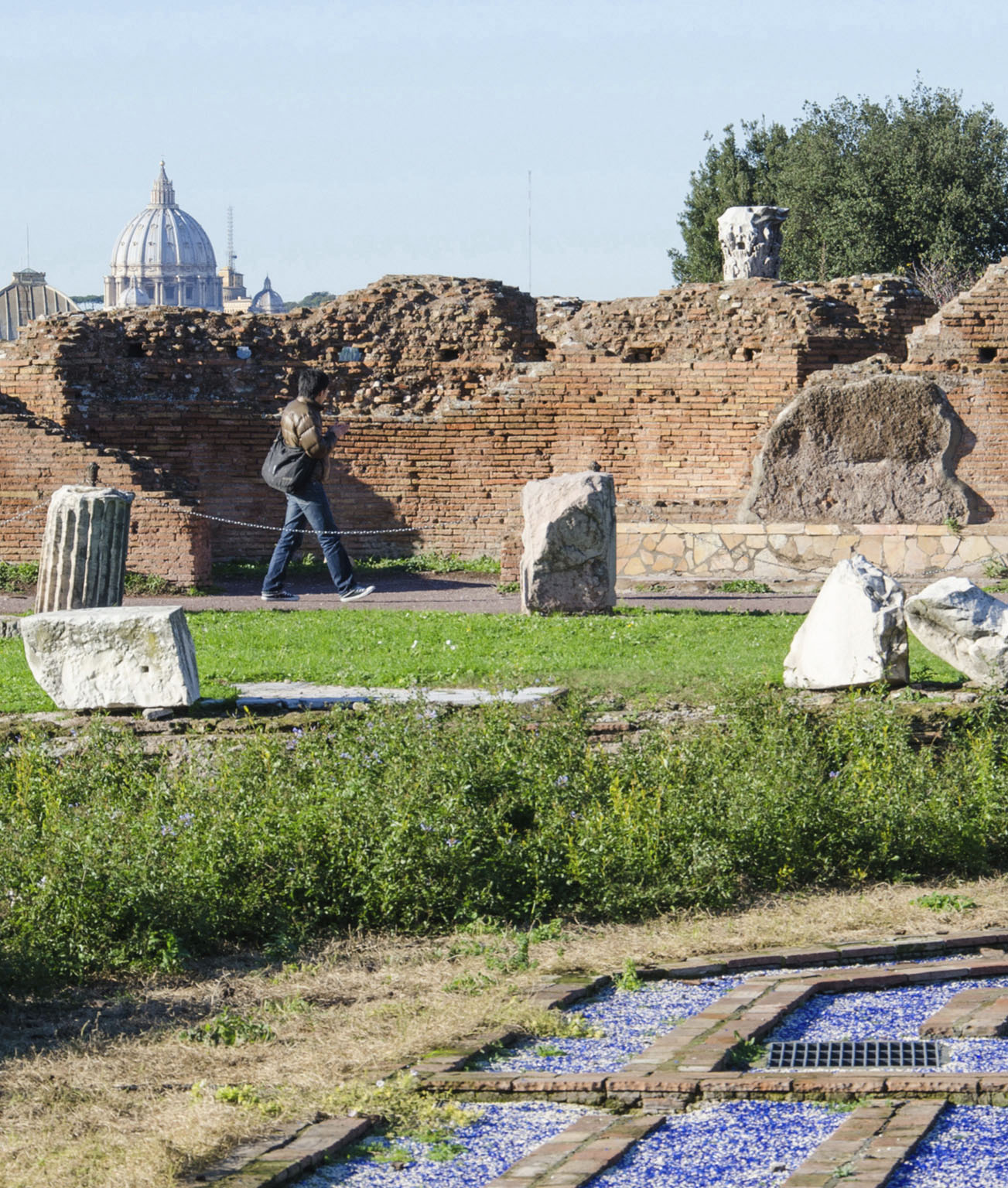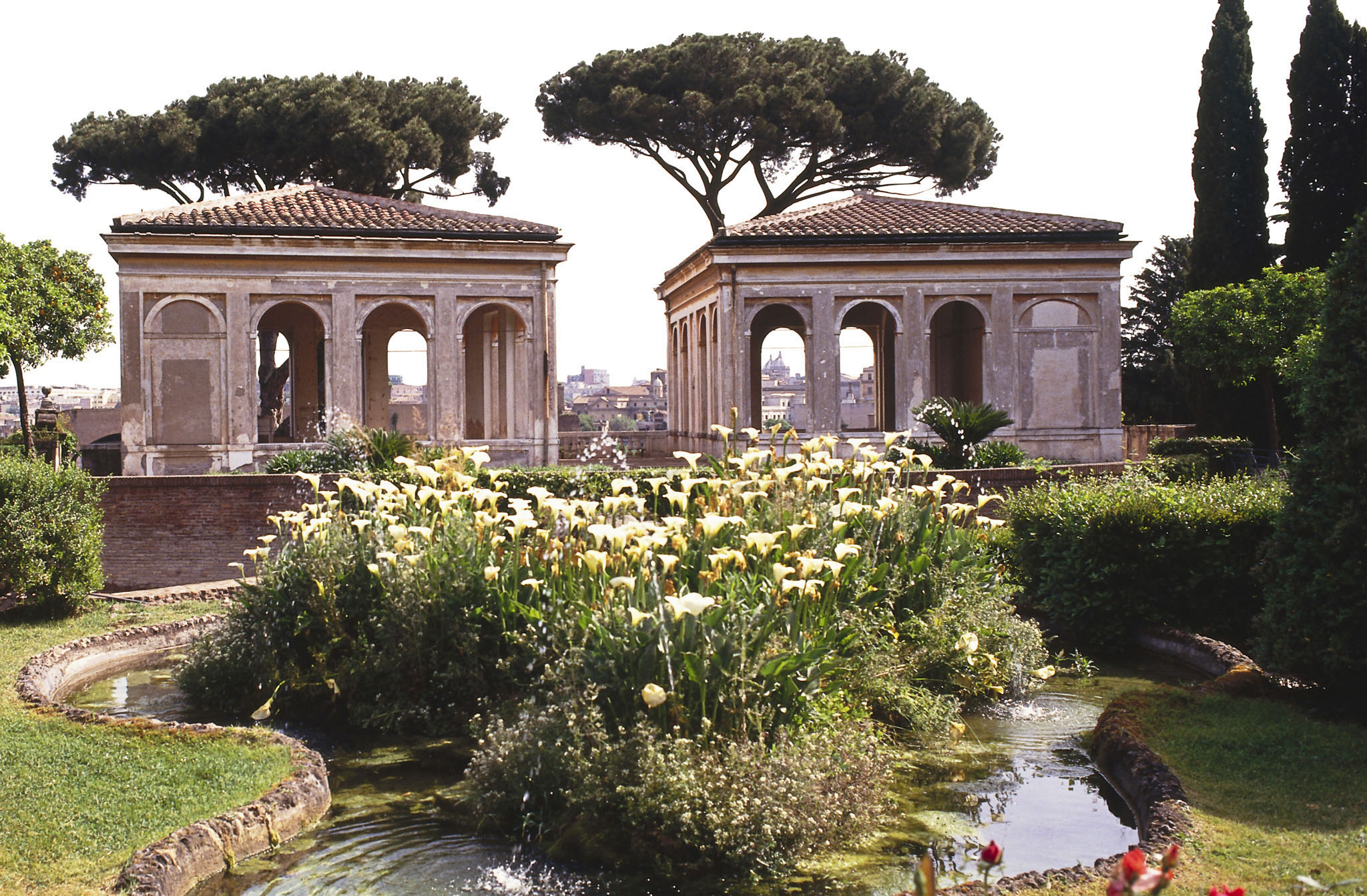PALATINE HILL FEATURES
1. Domus Flavia
Marked today mainly by the remains of two fountains, this imposing edifice was the official wing of a vast emperors’ palace, built by Domitian in 81 CE.

2. Livia’s House
1st-century BCE structure, now below ground level, formed part of the residence of Augustus and his second wife. Here you can examine a number of mosaic pavements and wall frescoes.
3. Palatine Museum and Antiquarium
This former convent houses a wealth of artifacts unearthed here, including pottery, statuary, ancient graffiti, and very fine mosaics. You can also study a model of the Iron Age Palatine.
4. Romulus’s Iron Age Huts
Traces of the three 9th-century BCE huts were uncovered in the 1940s. Legend says that this tiny village was founded by Romulus, who gave Rome its name.
5. Stadium
Possibly a racetrack, or just a large garden, this sunken rectangle formed part of Domitian’s palatial 1st-century abode.
6. Domus Augustana
All that remains of the private wing of Emperor Domitian’s Imperial extravaganza are the massive substructure vaults.
7. Temple of Cybele
The orgiastic cult of the Great Mother was the first Oriental religion to come to Rome, in 191 BCE. Still here is a decapitated statue of the goddess. Priests worshipping Cybele ritually castrated themselves.
8. Farnese Gardens
Plants and elegant pavilions grace part of what was once an extensive pleasure garden, designed by the noted architect Vignola and built in the 16th century over the ruins of Tiberius’s palace.

9. Cryptoporticus
This series of underground corridors, their vaults decorated with delicate stucco reliefs, stretches 425 ft (130 m). It connected the Palatine to Nero’s Domus Aurea or Golden House (Via della Domus Aurea).
10. Domus Septimius Severus
Huge arches and broken walls are all that remain of this emperor’s 2nd-century CE extension to the Domus Augustana.
A DAY IN THE LIFE OF A ROMAN HOUSEHOLD
Most Romans lived in insulae, apartment buildings of perhaps six floors, with the poorest residents occupying the cheaper upper floors. An average Roman male citizen arose before dawn, arranged his toga, and breakfasted on a piece of bread. Then out into the alleys, reverberating with noise. First, a stop at a public latrine, where he chatted with neighbors. Next a visit to his honored patron, who paid him his daily stipend. Lunch might be a piece of bread dipped in wine or olive oil, perhaps with a bit of cold meat. Bathing waited until late afternoon, when he met his friends at the public baths. There he lingered—conversing, exercising, reading, or admiring the artwork—until dinnertime. The main meal of the day was taken lying on couches, with his slaves in attendance. Then it was bedtime. Roman matrons, apart from their time at the baths (usually earlier than the men), spent the entire day at home, running the household.

Roman toga

Feasts held by wealthy Romans were usually extravagant affairs, served by slaves and eaten lying on couches, sometimes under garden pergolas.
TOP 10 ANCIENT ROMAN BELIEF SYSTEMS
1. State Religion of Greco-Roman Gods (especially the Capitol Triad: Jupiter, Juno, Minerva)
2. Household Gods: Ancestors and Genii
3. Cult of Cybele, the Great Mother
4. Deification of Emperors, Empresses, and Favorites
5. Orgiastic Fertility Cults
6. Mithraism
7. Cult of Attis
8. Cult of Isis
9. Cult of Serapis
10. Judeo-Christianity
